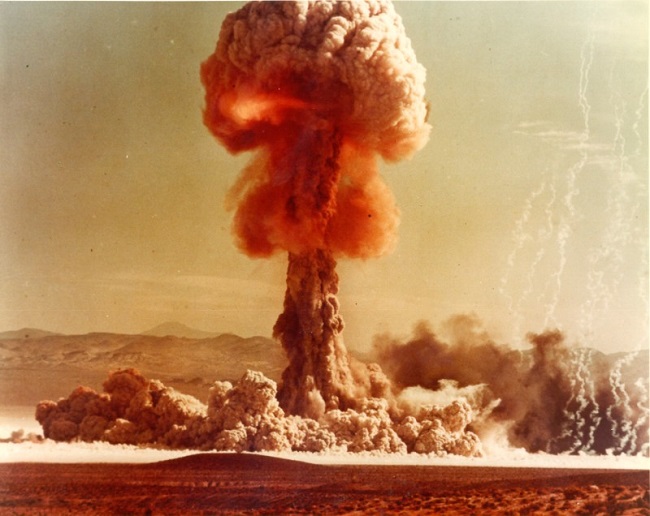Hi, Dr. Zoomie! I keep reading about how Russia might use “tactical” nuclear weapons against Ukraine. And I realized that I don’t know what the difference is between a tactical nuclear weapon and a…what’s the term for the ones we hid under our desks from during the Cold War?
Ah – you’re thinking of strategic nuclear weapons – the big city-killers. And I remember hiding under my desk too – six years old and already I was wondering how a desk was going to protect me from the fireball of a nuclear detonation. But I digress….
One way to think about it is that strategy is what helps you win a war while tactics are what helps you win a battle. Let’s think about boxing for a moment – if someone wants to be the champ they need to have a strategy: build your strength, start fighting locally and build a reputation, find a manager to improve your technique, start fighting at larger venues, start getting publicity, fight at even larger venues…you get the idea. Strategy involves some fighting – but it also involves working towards your larger goals. Without strategy, even a great fighter might never make it past the local boxing rings – strategy is how you become the champ. Tactics, on the other hand, are how you win the fight.
Nuclear weapons are similar. Strategic nuclear weapons are how a nation would try to win a nuclear war. They’re the ones that sap your enemy’s ability to wage war. So strategic nuclear weapons will need to have enough power to take out, say, the port where your enemy keeps their fleet, the depots where they keep their tanks, the bases where they keep their soldiers, the fields where they keep their missiles, the cities where they keep their leadership and so forth. So…these are the sorts of targets that tend to be well-protected and sending bombers is unlikely to be successful, so the best way to take out, say, a missile silo will be by using another missile. And missile silos tend to be buried in the ground and to be hardened, so destroying them will require a powerful warhead. Which brings us to strategic nuclear weapons – they’re going to have powerful warheads and, while there are some carried on bombers, most are carried on missiles…which will need to have a sufficiently long range to reach their targets from mid-ocean or from bases far from the front lines. Again – strategic nuclear weapons are intended to help nations to win wars.
Tactical nuclear weapons are intended to help generals to win battles. If your enemy outnumbers you greatly, if you realize that they’ve got far larger reserves than you’d thought, if they’re threatening to take a vitally important bridge then you might be tempted to make sure they can’t do so – you might realize that you can’t fight your way out of the battle unless you have a way to even the odds. That’s where the tactical nukes come in – they’re not nearly as powerful as the strategic weapons, but they’re still going to be the most powerful thing on the battlefield, and you can use them to kill masses of troops and tanks, to destroy an airfield, to kill a submarine that’s been stalking you – or to destroy an aircraft carrier that’s been launching strikes. There were some tactical nukes small enough to carry in a backpack – the soldier would hike in, place it in the route to be taken by an army or a tank battalion, set the timer, and hike back out again. Others could be fired inside an artillery shell or placed on short-range missiles. The thinking was that, since they were less powerful and would be used against troops or equipment on the battlefield (instead of against, say, an enemy’s cities) their use would be more “acceptable” and would not warrant a nuclear response that could lead to a nuclear war.
The problem is that this is just a guess. In fact, as recently as 2018 an American Secretary of Defense stated that “Any nuclear weapon use any time is a strategic game changer.” (https://docs.house.gov/meetings/AS/AS00/20180206/106833/HHRG-115-AS00-Wstate-MattisJ-20180206.pdf). If two nuclear-armed nations are at war but they have different philosophies when it comes to tactical nuclear weapons then what one nation views as a justifiable battlefield tactic (using low-yield nuclear weapons to compensate for smaller numbers or lower technology) could lead to a full-blown strategic nuclear response. But, again, nobody knows for sure. Would the US launch tens of hundreds of megatons of nuclear-armed missiles against Russian military bases, missile silos, and other targets in retaliation for Russia’s using a single 10 kiloton tactical weapon on the battlefield…risking a similar retaliation strike? Again – we just don’t know.
I hope we never find out.
